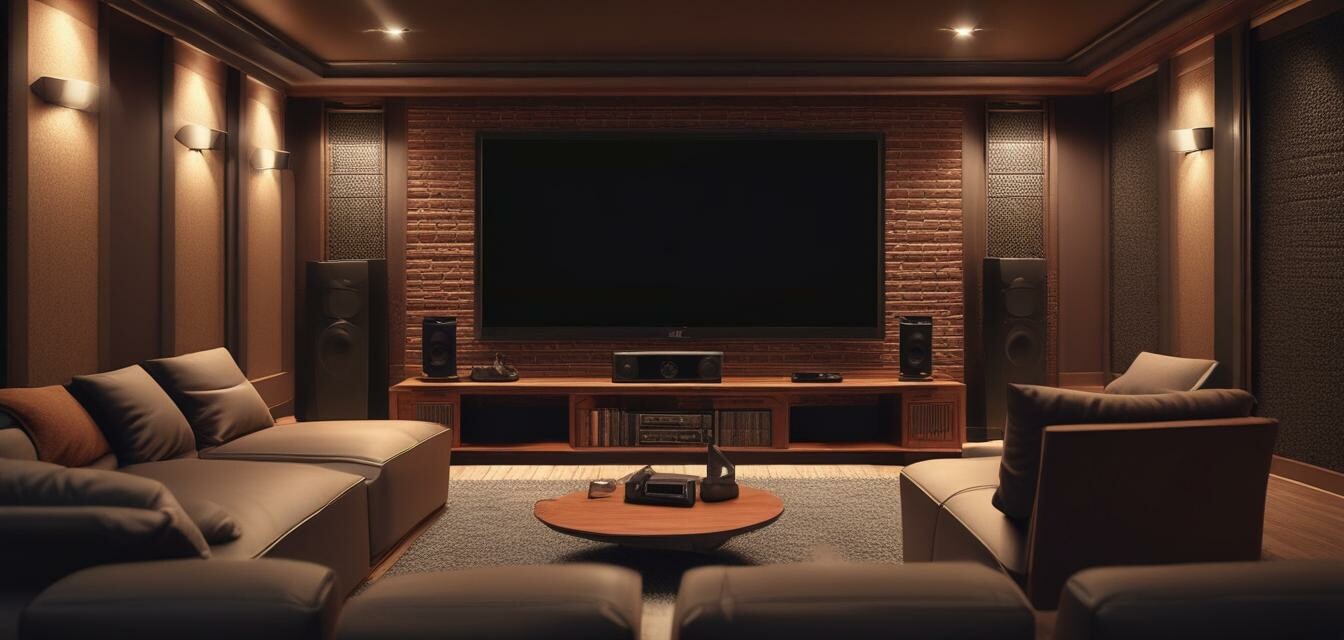
Understanding Acoustic Treatments for Your Home
Key Takeaways
- Acoustic treatments improve the clarity and quality of sound in a space.
- Common types of treatments include sound absorbers, diffusers, and bass traps.
- Proper placement of acoustic materials significantly enhances their effectiveness.
- Economic options are available that deliver measurable improvements in audio quality.
- Understanding the materials and techniques will save time and money in your sound improvement journey.
In today's music-oriented world, understanding acoustic treatments is essential for anyone looking to enhance their audio environment, be it for a professional setup or a cozy home space. This beginner's guide aims to simplify the concept of sound treatment and provide you with useful tips to achieve that crystal-clear sound you desire.
What is acoustic treatment?
Acoustic treatment involves adding materials to a room to control sound reflections, improve clarity, and minimize distortions. Unlike soundproofing, which focuses on keeping sound from leaking in or out of a room, acoustic treatment is about optimizing the sound quality within a space.
Why is acoustic treatment important?
- Enhances sound quality: Treatments can eliminate sound waves bouncing off walls, allowing for clearer audio.
- Improves listening experience: With controlled sound, you can enjoy music and movies with better balance and depth.
- Boosts professional settings: It's crucial for studios and offices to have the accurate sound profile for recording and broadcasting.
Types of acoustic treatments
There are several different types of acoustic treatments that can enhance your home audio experience:
| Treatment Type | Purpose | Best Use Cases |
|---|---|---|
| Sound Absorbers | Reduce echoes and reverberation | Listening rooms, home theaters |
| Diffusers | Scatter sound waves to prevent harsh reflections | Auditoriums, larger rooms |
| Bass Traps | Control low-frequency sounds | Basements, music studios |
| Acoustic Panels | Combine absorption and diffusion | Multi-purpose rooms |
Choosing the right materials
When selecting materials for acoustic treatment, consider the following options:
- Foam Panels
- Fabric-wrapped Panels
- Wood Diffusers
- Carpets and Rugs
Tips for beginners
- Start small: Focus on treating the first reflection points where sound waves hit flat surfaces.
- Experiment: Try different placements and materials to find what works best for your space.
- Seek balance: Make sure to consider both absorption and diffusion for a well-rounded sound.
- Consult professionals: If necessary, hire an audio professional for a tailored assessment.
- Use affordable options: Many DIY materials can improve acoustics without breaking the bank.
Installation and placement
Proper installation and placement of acoustic treatments are critical for maximum effectiveness. Here are a few placement strategies:
- Identify your room’s primary reflection points using a test sound source.
- Mount acoustic panels on the walls where reflections are strongest.
- Place bass traps in corners where low-frequency sound tends to build up.
- Utilize diffusers on the rear walls to enhance sound distribution.
Cost-effective solutions for acoustic treatments
Investing in acoustic treatments doesn't have to be expensive. Here are some cost-effective solutions:
- DIY acoustic panels using rock wool and fabric.
- Utilizing heavy curtains to absorb sound.
- Placing bookshelves filled with books to act as diffusers.
- Using rugs and carpets to reduce echoes on floors.
Final thoughts
Understanding acoustic treatments is the key to improving sound quality in your audio space. By selecting the right materials, planning placement strategically, and employing cost-effective solutions, you can elevate your listening experience significantly. For further insights on speaker types to enhance audio quality, check out our guide on buying guides, where you can find expert recommendations tailored to your needs.
Pros
- Improves sound clarity and quality.
- Enhances the overall listening experience.
- Can be achieved with budget-friendly solutions.
- Customizable to fit any room.
Cons
- Requires some initial investment for materials.
- May involve trial and error for optimal results.
- Improper placement can lead to suboptimal sound.